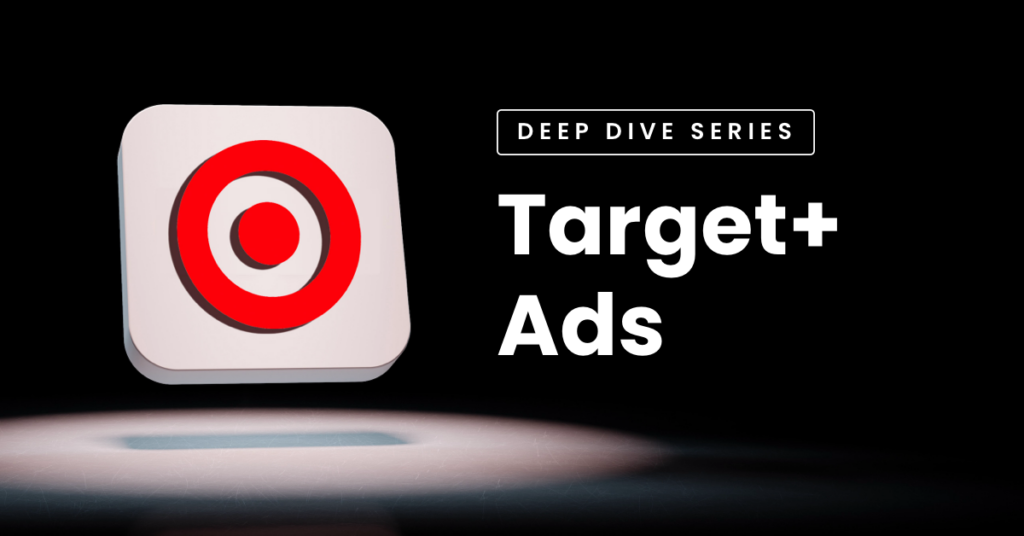Amazon and Walmart are the two strongest online marketplaces for ecommerce sellers of every size, product, and budget. That being said, they are not the only avenues for brands looking to succeed. In fact, Target Plus is an up-and-coming marketplace that shows a lot of promise for businesses able to take the plunge. It is a great platform to add to y our omnichannel strategy. However, it’s important to remember that it lacks some features compared to the more established marketplaces. To get you up to speed, we continue our deep dives with an intimate look at the formatting and differences of Target Plus Ads.
Advertisement Auction Style
Unfortunately, Target Plus has yet to abide by the modern standard of second-price bidding. Instead, they continue to use a first-price bid model. That means, if you place the winning bid, you will need to pay the full amount regardless of other circumstances. If you bid $5, you will need to pay $5 even if the second-place bid is $4.90 or $2. Unsurprisingly, many ecommerce sellers find this unfavorable as the high pricing model can lead to increased spend.
Our many years of supporting leading brands of all sizes provided us with ways to avoid unnecessarily overspending. Vendors who use Target Plus Ads can optimize their bids by starting roughly 30% below what they’re willing to spend, and increasing as needed. This approach allows you to stay agile and increase your bids only when necessary to win, saving you money in the long term.
Search Results Placements
Appearing high on search results pages is critical to succeed in any marketplace — Target Plus is no different. After all, this is the main avenue consumers find the products they want to purchase. You can reach people when they are looking to solve their problems and drive home the value of your products. If, in that search, they find a product that fulfills their needs, they are likely to buy it. You want to be that product.
Good news: Target Plus supports organic and paid presence in results. If your listings rank well organically and you win bids, you could earn both organic and paid search results. This is great for growing your business as it doubles your performance. You get twice as much real estate in search results, twice as many opportunities to be seen, and twice as many opportunities to convert. So be sure to plan your strategies and budget accordingly to take advantage of both listing styles.
Target Plus Ads – Device Targeting
One of the current drawbacks of Target Plus ads is their lack of device targeting. Many consumers prefer a personalized, tailored experience, which could include having ads designed for their preferred viewing device.
However, sellers cannot designate where they want their ads to be shown, desktop or mobile. To account for this, we recommend paying extra attention to the data generated by your Target Plus ads. That way, you can see which content and device styles perform best for you on the platform. That can give you an idea of what device is used primarily by your audience and tailor your ads to that.
Target Plus Ad Match Types
Another limiting aspect of Target Plus is that it only supports exact-match ad types. Due to this, sellers need to know exactly what keywords your audience searches, so you can provide them with relevant, persuasive ads.
This can be beneficial as you know the keyword and are able to make the most compelling advertisement for it. However, if your audience spells something incorrectly or uses a key phrase that you did not consider, your ads will not appear. To make the most out of this limitation, we recommend doubling down on research of your users and competitors, while basing your campaigns off of accurate data.
Targeting Options
Target Plus offers multiple targeting options which allow you to run different tactics throughout the funnel:
- Keyword targeting
- Category targeting
- Product Display Page targeting
This helps make up for Target Plus’s limitations by helping you serve ads to customers during certain circumstances that may help them convert more easily. However, it is important to note that there is no competitor targeting. This limits the data and opportunities you can gather from them. As a benefit, competitors cannot target your high-performing products, which can save you money on spend allocated to branded terms.
The Target Plus Ads Approval Process
Approvals are only sent three to four times daily for keyword campaigns.
Keyword campaigns and any revisions will take a few hours to be approved and take effect.
The final difference between Target Plus and other marketplaces is that they do not approve and update ads immediately. In fact, approvals are only sent three to four times per day for keyword campaigns. That means that new campaigns and any revisions will take a few hours to be approved and take effect.
Keep your education going with the other marketplaces featured in our deep dive series:
Looking for even more fantastic lessons in the state of omnichannel marketing for ecommerce? Grab our free ebook!
Want to boost your performance even further? Check out Flywheel 2.0! Our leading AI software aggregates data from multiple platforms and uses that to optimize your ads every hour. Flywheel 2.0 saves you time and money, and is the single source of truth for everything ecommerce. Additionally, Flywheel users can join our free Community to connect with peers in your industry or learn about the latest ecommerce information. Start a free trial today.





